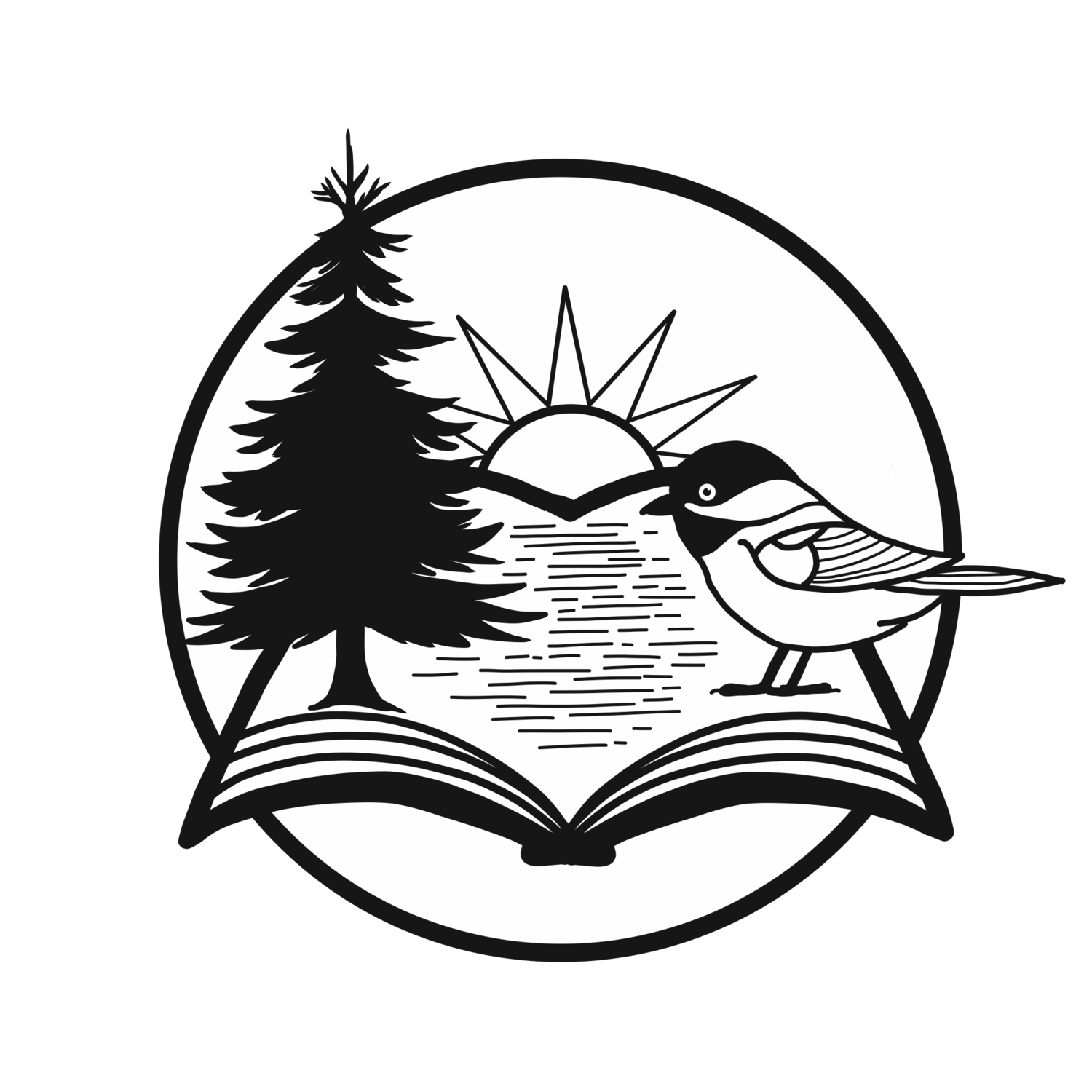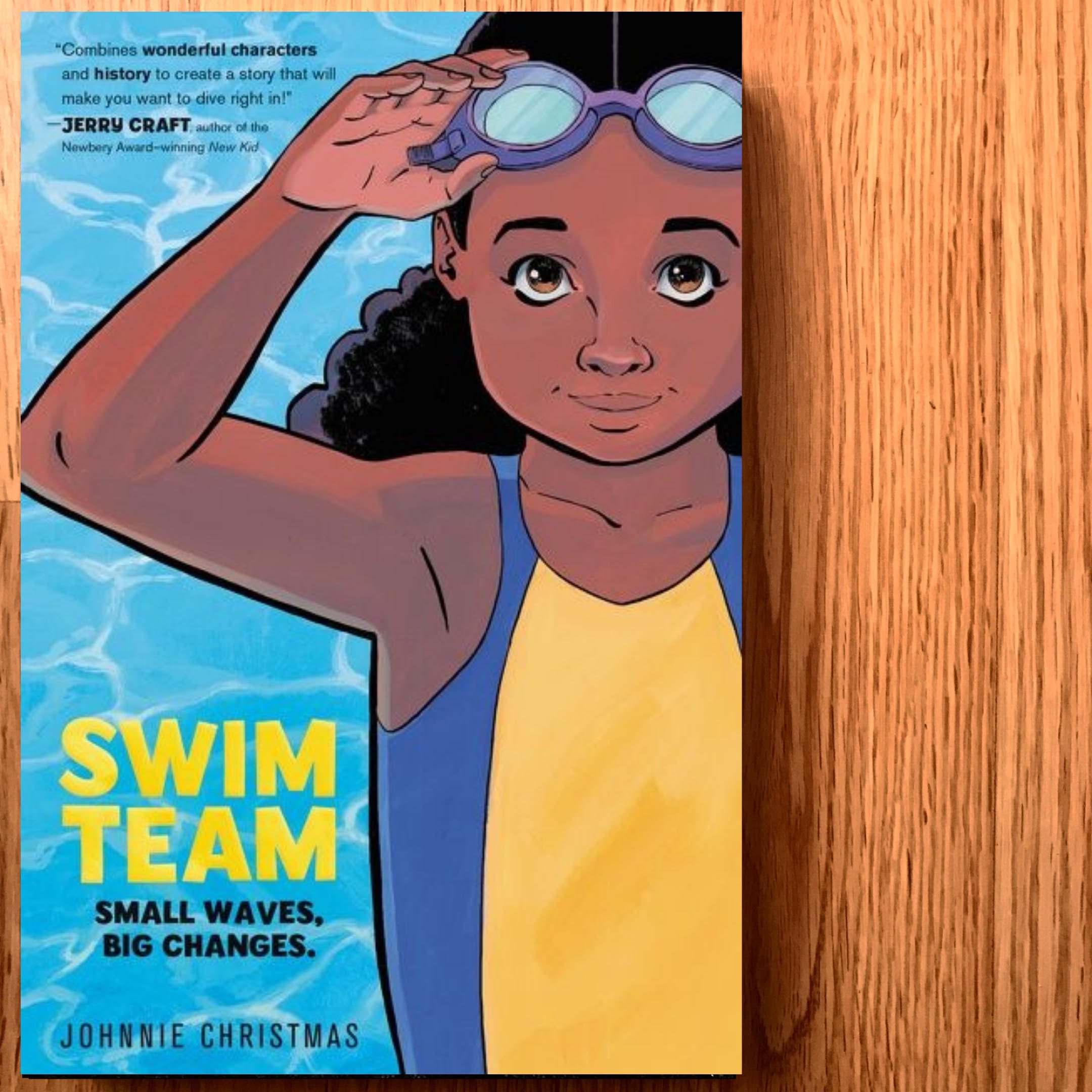By Christine McFaul
Swim Team: Small Waves, Big Changes is a new middle grade graphic novel by Vancouver-based author and artist Johnnie Christmas (publication date May 17th, 2022; currently available for pre-order).
The story opens with young protagonist Bree leaving Brooklyn for Florida, where her dad has accepted a job. Bree is nervous about the move, making friends, and starting over at a new middle school. She tries to approach the coming changes with a positive attitude but it’s hard not to let doubts creep in, especially when she finds out her top choice of elective—Math Puzzles—is full. In fact, the only elective left for Bree to take is Swim 101. Which is a big problem, since academically oriented Bree doesn’t know how to swim.
Soon Bree is skipping class to avoid anyone finding out her secret. But after a worrisome tumble into the pool at her apartment complex introduces Bree to a new swim coach, she finally begins to find her way to the water. She quickly learns to out-swim her doubts and many of her peers, a feat that sees her qualifying for her school’s floundering swim team. As the newest member of the Manatees, Bree makes friends with her teammates and even places at her first meet; life is good! Until the Manatees learn that simply placing is not good enough. They will need to start winning meets or risk losing their pool, which is slated to be sold to a frozen smoothie chain. Bree’s newfound swim skills and friendships will be tested as she works with the Manatees to beat their hyper-competitive private school rivals, win the state championship, and ultimately save their pool—the last one in their community that is still free and available for public use.
Swim Team: Small Waves, Big Changes introduces readers to a vibrant and engaging set of middle grade characters. The sport story is both relatable and layered as Christmas seamlessly weaves the history of racism in America’s public pool system into the plot. Christmas strikes a perfect balance between the information that is delivered through writing and that which is conveyed visually. His previous experience in comics shines as he expertly wields his pencil to further develop his characters. The colour choices (featuring a lot of turquoise and yellow) create a sunny Florida swim vibe that shifts subtly with the moods and action of the story. Every detail, down to the lettering, draws out the middle grade experience (some of my favourite moments include “Bree’s Favourite Things” which have the look of notebook doodles, and the visual representation of Bree’s doubts throughout).
Graphic novels are becoming increasingly popular across all age categories of kid lit, and after finishing this book, I can absolutely see why. Swim Team: Small Waves, Big Changes is a warm and layered read enhanced by its beautiful and nuanced illustrations. An excellent middle grade choice for either academic or personal reading.
Note: I encourage anyone whose interest in Swim Team: Small Waves, Big Change was piqued after reading my thoughts to check out opinions provided by graphic novel aficionados (as this is my first review in this genre!) as well as by reviewers who can add a personal perspective to Bree’s experiences within the American public pool system as a Black middle school student.
Thank you to Harper Collins Canada for the complimentary copy in exchange for an honest review.





















